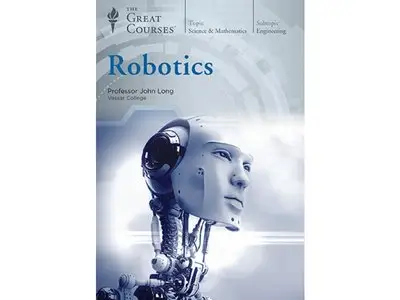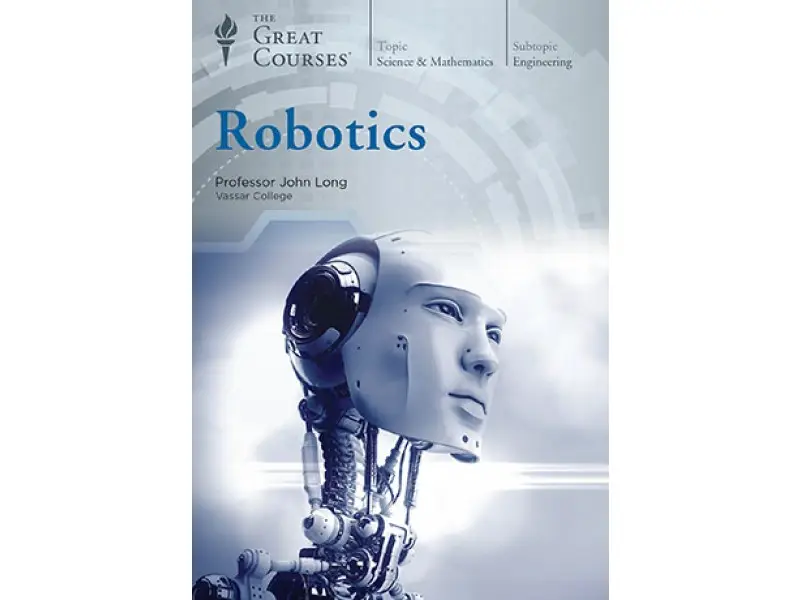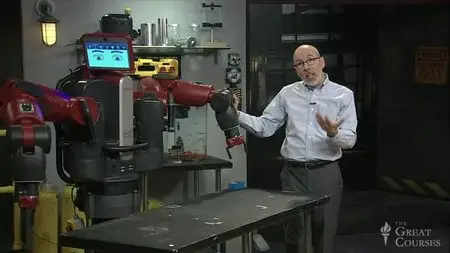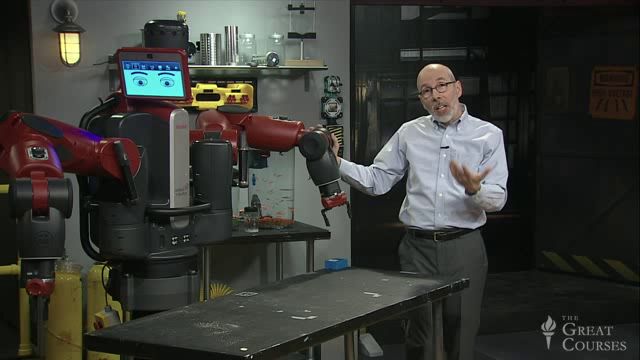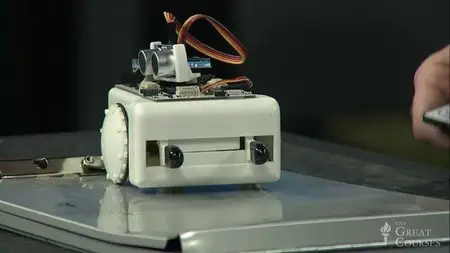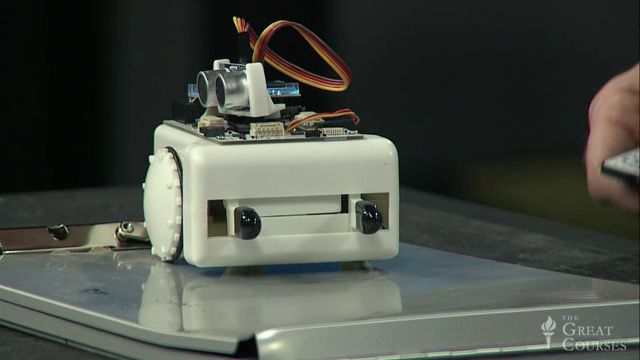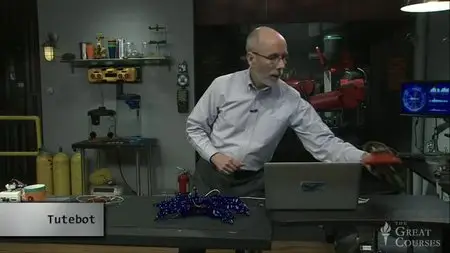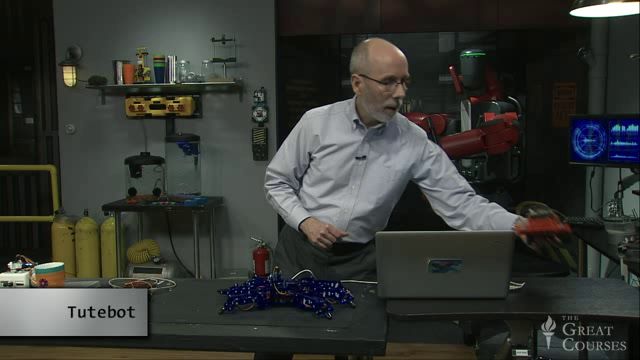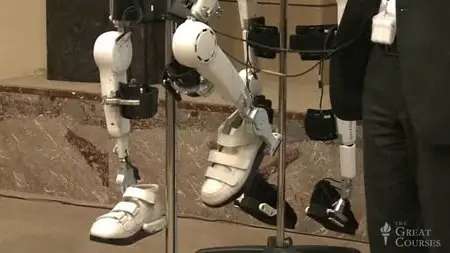TTC - Robotics
WEBRip | 24 x WMV/AVC, ~2000 kb/s | 640 x 360 | English: WMA, 128 kb/s (2 ch), 44.1 KHz | 10.51 GB
Genre: Science | Language: English
WEBRip | 24 x WMV/AVC, ~2000 kb/s | 640 x 360 | English: WMA, 128 kb/s (2 ch), 44.1 KHz | 10.51 GB
Genre: Science | Language: English
Robots. The mere word conjures up a bevy of mind-bending images pulled straight from popular science fiction tales. But robots aren’t just the stuff of entertainment. They’re real. They’re everywhere around you. And they’re transforming your life in ways you can’t imagine.
Ours is a world increasingly defined by the cutting-edge field of robotics. Today, we live among marvelous machines that can do things like:
provide support for soldiers in challenging terrain,
assist highly trained surgeons in performing medical procedures more precisely,
explore the harsh environments of space that astronauts can’t yet visit,
manufacture products with a speed unmatched by human hands.
In short, the future of human civilization depends on collaborative robotics: humans and machines working together. According to robotics expert and award-winning professor John Long of Vassar College, “Robots are what computers and self-propelled vehicles were to the 20th century: a technological revolution that impacts nearly every aspect of our lives, businesses, and security.”
Yet for all their seen (and unseen) prevalence, robotics remains mysterious to most of us. How exactly do robots work? What does it take to build a robot that can, for a period of time, perform tasks and make decisions with little human input? What are the most revolutionary robots at work today? How do we balance the technological benefits of robots with the potential risks they pose to pre-existing ways of life?
To answer these and other questions is to take an in-depth journey into an exciting world; a journey Professor Long and The Great Courses present in the 24 incredible lectures of Robotics. Using in-studio robot demonstrations, videos of other state-of-the-art robots, 3-D animations, and other amazing visual aids, Professor Long demystifies the world of robots and provides a comprehensive introduction to these intelligent machines. Whether you’re looking to grasp the hard science of how robots work or simply curious about the implications of robots for society, consider this course your official passport to an astonishing new world.
Intriguing Scientific Terrain
Professor Long’s course is an encyclopedic yet accessible introduction to one of the most important areas of modern science. From the concept of robotic autonomy to the inner workings of sensors to the intriguing possibilities of the future, Robotics covers every major topic in the field.
How robots work: To better appreciate robots, you have to know how they operate. You’ll watch Professor Long take robots apart to demonstrate how they work using actuators, controllers, and other key parts; discover how roboticists design robots using insights from animal and human behavior; and even learn DIY skills for building your own robot.
Where robots work: Many lectures focus on the wide range of environments and real-world scenarios where robots are already proving to be indispensable to how you live. You’ll explore robots in factories, homes, and hospitals; in the air, on land, and under the sea; on mission-critical battlefields and awe-inspiring voyages to distant planets.
Robots and our future: With so many robots around us, it seems like the future is already here. So what do the next decades have in store? Swarm robots, humanoid robots, robots that learn from each other, and even self-reproducing robots are just some of the many topics you’ll uncover as Professor Long explains the latest research in robotics.
As you proceed through this course, you’ll also get a look at some of the major ideas and ethical dilemmas involved in the world of robotics.
Trade-offs: Robots can’t do everything well. One universal lesson about robot bodies is that there are always trade-offs involved in designing them (such as building a robot for maneuverability instead of efficiency).
The Three Laws of Robotics: Isaac Asimov’s famous principles emphasize that robots may in no way injure humans. So how are these laws compromised (or circumvented) by military robots designed to target and eliminate human threats?
The uncanny valley: Developed in the 1970s, this hypothesis proposes that as robots become more human in appearance, our affinity for them grows. But once robots appear too human, they simply become disturbing.
Fascinating Robots of Today—and Tomorrow
Of course, the most enjoyable part of Robotics is the robots themselves.
You’ll get the opportunity to meet, learn about, and even witness in action an amazing roster of robots that are transforming our everyday lives. Robots that are simple and complex, large and small; robots that work on land, that hover in the air, that swim underwater; robots that work in our homes, our factories, our hospitals; robots that clean rooms and mow lawns and even perform surgery.
Roomba: This popular home robot cleans floors by using infrared sensors to detect walls and a homing beacon to return it to its charging station. The design trade-off with a robot like Roomba is that while it can easily transition from bare floors to carpet, it can’t move up and over stairs.
Wave Glider: This robotic “platform” has solved two major challenges aquatic environments present to robotics. Since Wave Glider’s wave-based power supply is endless, energy isn’t a problem. And because Wave Glider lies at the water’s surface, it can easily navigate using GPS.
Robonaut 2: One of the most exciting projects in orbital robotics is Robonaut 2, a humanoid robot consisting of a head, torso, and two independently functioning arms. Its goal is to safely assist astronauts working in the International Space Station.
Da Vinci: A variation on the classic robot arm, Da Vinci is a tele-operated robot helping to lead the charge in medical robotics. This highly advanced robotic surgical system moves robotic arms and tiny hand-like manipulators inside the human body, making minimally-invasive surgery even less invasive
EATR: The Energetically Autonomous Tactical Robot (EATR) actually ingests organic matter for fuel. This wheeled ground robot’s external combustion engine uses biomass to generate electrical power—making it perfect for operating in remote areas for long periods of time.
Not only will these and other robots open your eyes to the intricate details of how robots are designed, built, and improved upon, they’ll illuminate how roboticists tackle everyday challenges and create technological advancements that are central to the way we live today – and the way we’ll live tomorrow.
Robots—Explained by a Brilliant Innovator
Transforming our studios into a veritable robotics laboratory, Professor Long lets you experience the trials and triumphs of robotics firsthand. Director and co-founder of Vassar’s Interdisciplinary Robotics Research Laboratory, he’s researched, designed, and built robots with funding from major government agencies, including the National Science Foundation and the U.S. Small Business Administration. He takes you behind the scenes to show you what worked, what didn’t, and why.
You’ll also witness how robots operate at the level of the wire and sensor; how they’re built, taken apart, and rebuilt for different uses; how they’re designed using the latest technological advancements; and more. Packed with robot demonstrations and 3-D animations, these visually stimulating lectures are an exciting exploration of robotics at every level.
Ultimately, it’s all in service of Professor Long’s overarching goal: to make you more informed and engaged with this increasingly important technology, which brings together the fields of engineering, computer science, neuroscience, and biology. Robotics shows you how we have been using robots to transform our world for decades—and how, in the decades to come, they will continue to revolutionize our lives.
24 Lectures
1- The Arrival of Robot Autonomy
2- Robot Bodies and Trade-Offs
3- Robot Actuators and Movement
4- Robot Sensors and Simple Communication
5- Robot Controllers and Programming
6- Human-Inspired Robot Planning
7- Animal-Inspired Robot Behavior
8- Basic Skills for Making Robots
9- Designing a New Robot
10- A Robot for Every Task?
11- Robot Arms in the Factory
12- Mobile Robots at Home
13- Hospital Robots and Neuroprosthetics
14- Self-Driving Vehicles
15- Flying Robots: From Autopilots to Drones
16- Underwater Robots That Hover and Glide
17- Space Robots in Orbit and on Other Worlds
18- Why Military Robots Are Different
19- Extreme Robots
20- Swarm Robots
21- Living Robots?
22- Social Robots
23- Humanoid Robots: Just like Us?
24- The Futures of Robotics
LabView - Collective Books
Mega E-books Pack (2013)
Malware Centric E-book Collection
Huge Electricity, Magnetism, A..., Healing - EBooks Collection
Premium IT eBooks Collection
Huge Encyclopedias - EBooks Collection
Osprey Publishing - Military History Books Collection
Gale Encyclopedias - Full Pack
IT Books Collection (Basic - Intermediate - Advance)
Medicinal and Aromatic Plants - 50 Volume Set
Doctor Who ebooks Collection
Learning HTML Ultimate Collection
Comprehensive Robotics Books Collection
Great Royal Web Design Pack
Civil Engineering Geotechnical books
Luftwaffe Colours Collection
Many Thanks to Original uploader.
For More Rare Movies Check out my blog!
Download Links:
No Mirrors Please


